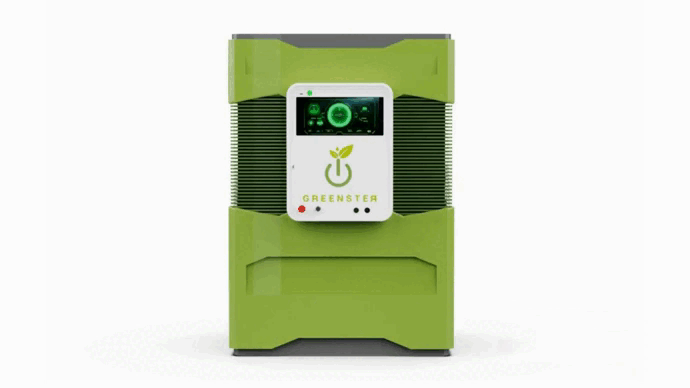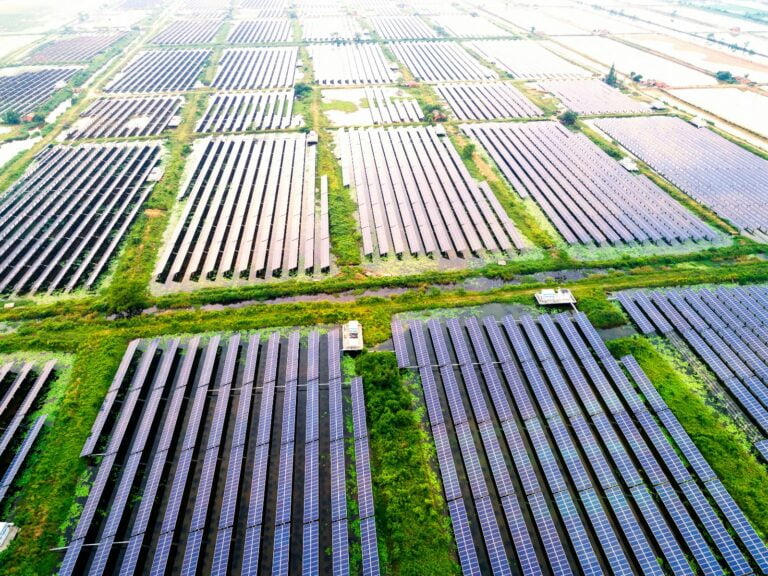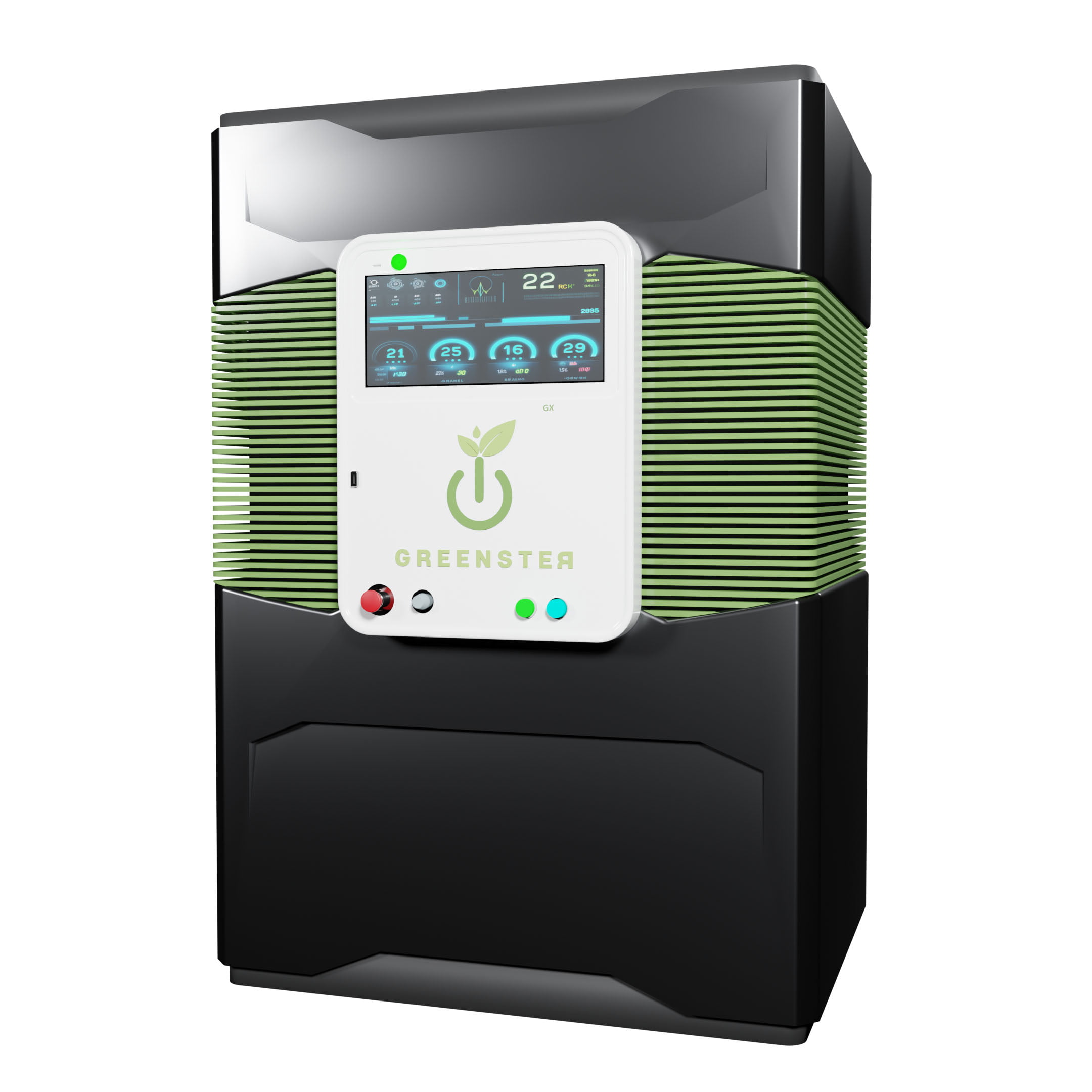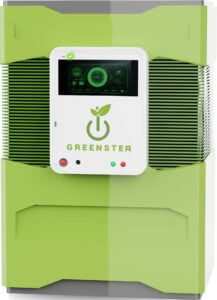.
COMPARISON
1 MW Solar Farm vs. GREENSTER 1 MW Energy Hub Microgrid System
In comparing the old and current technology of Solar Farms with the groundbreaking GREENSTER Energy Hub Microgrid System, it’s evident that a notable evolution is underway in energy solutions. While Solar Farms traditionally rely on sunlight exposure for energy generation and entail extensive infrastructure and land use, the GREENSTER Energy Hub operates independently of sunlight, offering consistent output regardless of weather conditions. With simplified installation requirements and reduced labor needs, the GREENSTER Energy Hub presents a more efficient and cost-effective alternative, boasting higher daily and yearly energy output. This paradigm shift towards innovative microgrid systems signifies a progressive step towards a greener and more sustainable future, promising enhanced reliability, efficiency, and environmental stewardship in energy generation.
Old & Current Technology: 1 MW Solar Farm

- Requires 4 to 6 hours of solar exposure during the day.
- Needs approximately 3,334 solar panels of 300 watts per panel.
- Requires inverters, mounting structures, and electrical components.
- Site preparation involves clearing vegetation, grading land, and installing infrastructure.
- Typically requires around 4 to 5 acres of land for installation.
- Installation can take several weeks to a few months.
- Labor requirements may include a crew of approximately 5 to 10 installers.
- Generates around 4 to 5 MWh of electricity per day.
- Yearly output ranges from 1,460 to 1,820 MWh of electricity.
- Total estimated cost ranges from $800,000 to $1.5 million, excluding land costs.
New Technology: GREENSTER 1 MW Energy Hub Microgrid System

- No need for sunlight.
- Does not require solar panels or inverters.
- No need for mounting structures.
- Site preparation is minimal, with no need for land clearing.
- Requires around 950 sq feet of land.
- Installation can take several weeks to a few months.
- Labor requirements may include a crew of approximately 2 to 4 installers.
- Utilizes 4 units of 250 kW per hour GREENSTER Microgrid Systems.
- Generates around 24 MWh of electricity per day.
- Yearly output is approximately 8,760 MWh of electricity.
- Total estimated cost ranges from $1.2 to $1.3 million, excluding land costs.
Conclusion:
In comparing the 1 MW Solar Farm to the GREENSTER 1 MW Energy Hub Microgrid System, several key differences emerge:
- The GREENSTER Energy Hub does not rely on sunlight for energy generation, offering consistent output regardless of weather conditions.
- GREENSTER Energy Hub requires significantly less land, labor, and equipment compared to a solar farm, resulting in lower installation and operational costs.
- Despite the higher initial investment, the GREENSTER Energy Hub provides a higher daily and yearly output of electricity, making it more efficient and cost-effective in the long run.
- Overall, while both technologies offer renewable energy solutions, the GREENSTER Energy Hub presents a more advanced and sustainable option, providing higher efficiency, reliability, and cost savings over time.

Unveiling the Truth about Solar Farms and
GREENSTER Energy Hub Microgrid System
Solar farms and the GREENSTER Energy Hub Microgrid System are both innovative solutions aimed at transitioning towards renewable energy and reducing our reliance on fossil fuels. While both technologies offer benefits, it’s essential to understand their differences and potential drawbacks. Let’s take a closer look at the truth behind solar farms and the GREENSTER Energy Hub Microgrid System:

Solar Farms:
- Land Use: Solar farms require large land areas for installation, which can lead to habitat disruption and conflicts over land use.
- Visual Impact: The visual appearance of solar farms can alter landscapes, potentially impacting aesthetics and property values in surrounding areas.
- Environmental Impact: While solar energy itself is clean, the production and disposal of solar panels can have environmental impacts, including resource depletion and pollution from manufacturing processes.
- Intermittency: Solar energy production is dependent on weather conditions, resulting in intermittency and variability, which can pose challenges for grid integration and stability.
- Community Opposition: Solar farm development may face opposition from local communities concerned about visual impacts, land use conflicts, and potential decreases in property values.

GREENSTER Energy Hub Microgrid System:
- Efficiency: The GREENSTER Energy Hub Microgrid System offers high efficiency and reliability, generating electricity consistently without relying on sunlight.
- Space Requirements: Unlike solar farms, the GREENSTER Energy Hub Microgrid System requires minimal space, making it suitable for a wide range of urban and rural environments.
- Environmental Impact: GREENSTER Energy Hub Microgrid System utilizes renewable energy sources and green hydrogen technology, minimizing environmental impact and emissions associated with fossil fuels and traditional solar panels.
- Grid Independence: With its microgrid capabilities, GREENSTER offers energy independence and resilience, reducing reliance on centralized grid systems and enhancing energy security.
- Cost-Effectiveness: The GREENSTER Energu Hub Microgrid System provides cost-effective energy solutions, offering competitive pricing and savings compared to traditional solar farms.
In conclusion, while solar farms have been a significant step towards renewable energy adoption, the GREENSTER Energy Hub Microgrid System represents a more advanced and sustainable solution for the future. With its efficiency, reliability, and minimal environmental impact, GREENSTER offers a game-changing alternative to traditional solar farms, paving the way for a greener and more sustainable energy landscape.
Join now and start making a positive impact on our planet while embracing the freedom and resilience of off-the-grid living.

